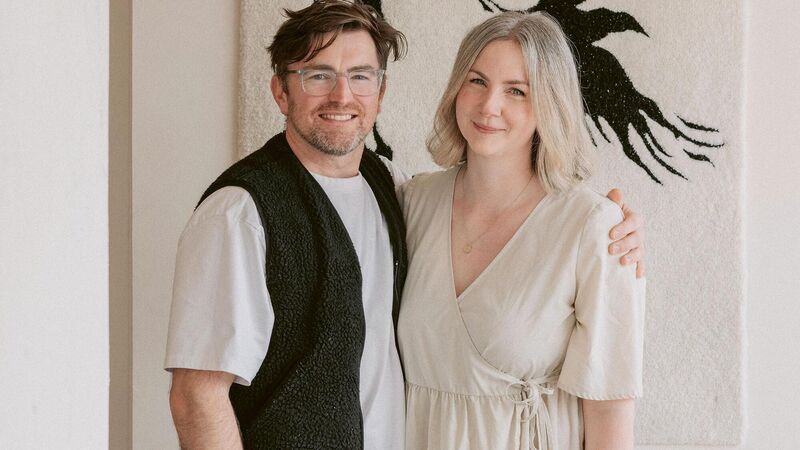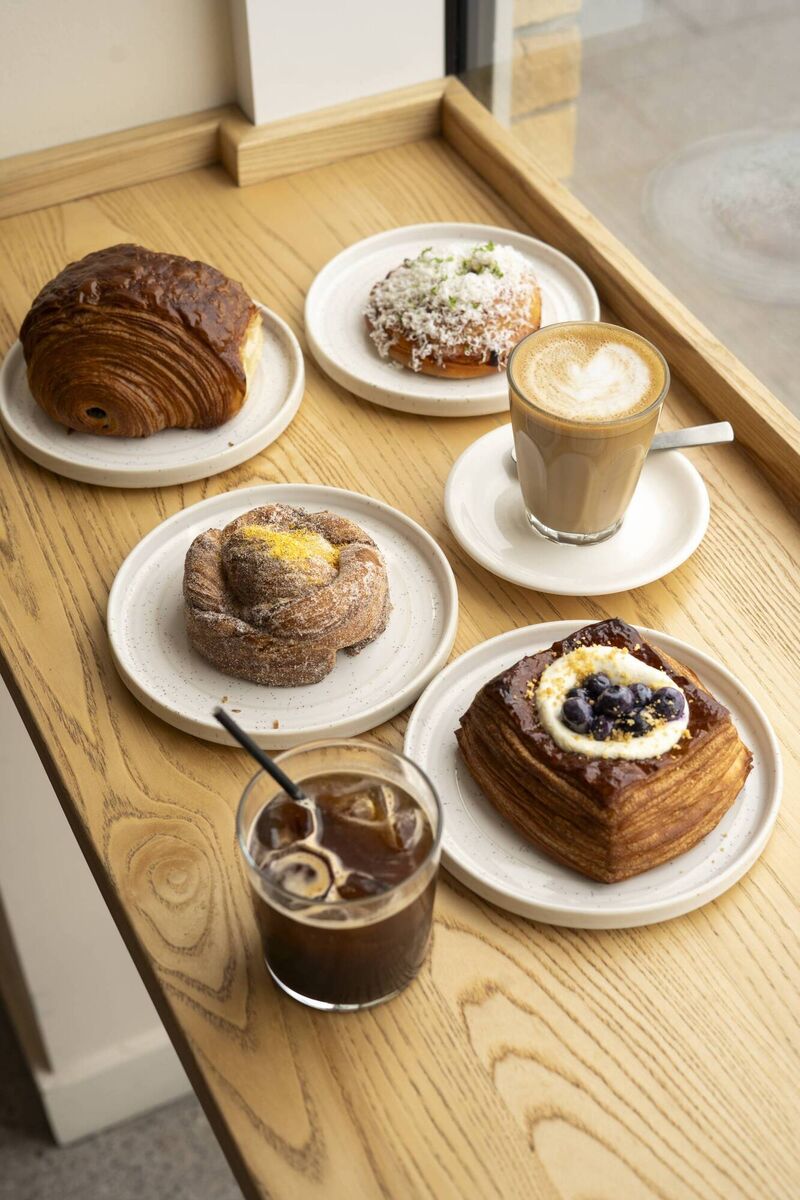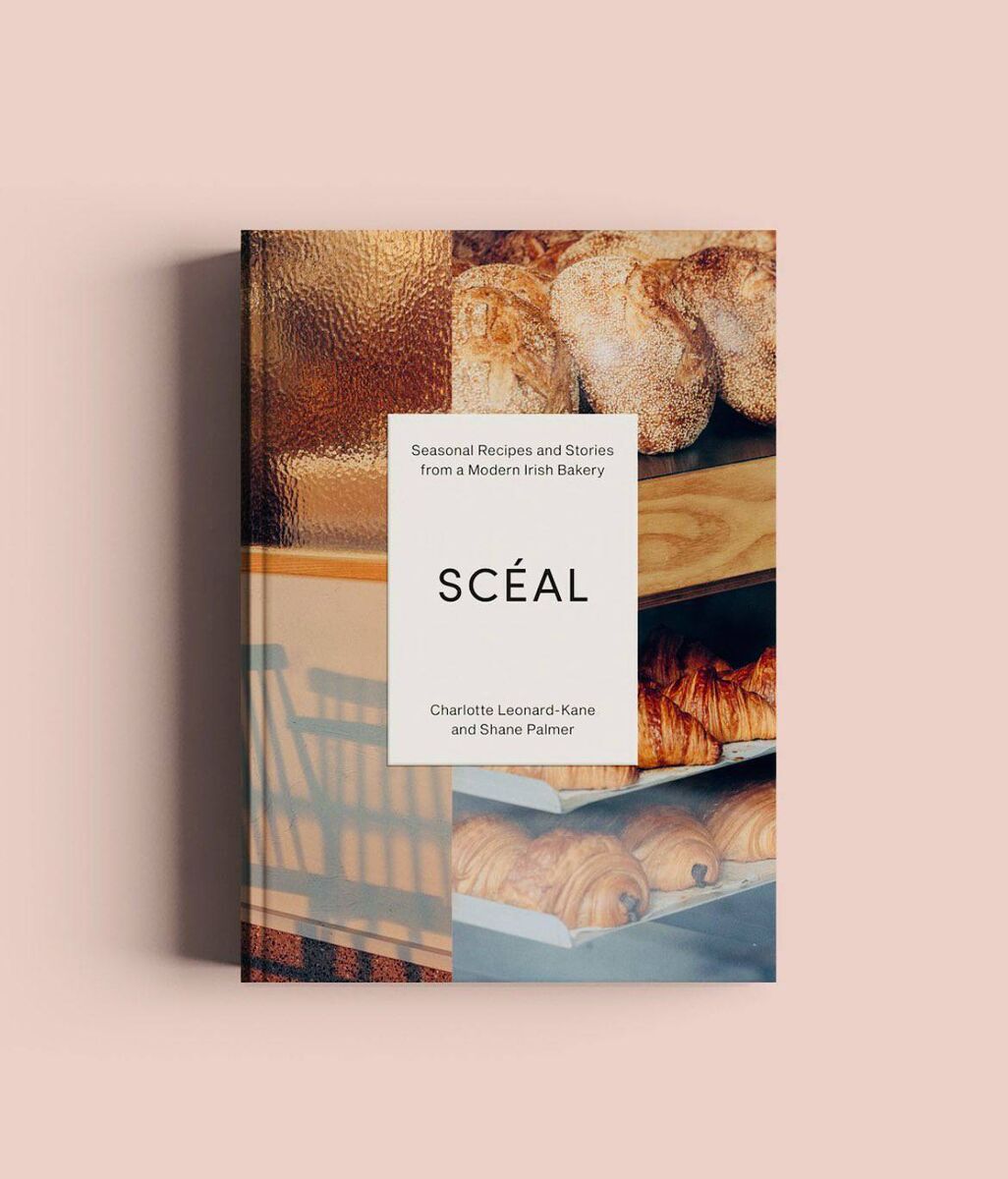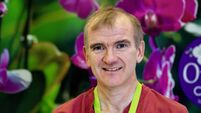Seasonal recipes and stories from Scéal Bakery

Shane Palmer and Charlotte Leonard Kane. Picture: Shantanu Starick
“We focus on local and seasonal. That has been our focus since the very beginning.”
Since Charlotte Leonard-Kane and Shane Palmer set up Scéal Bakery in 2017 they have steadfastly stuck to their baking guns, consistently incorporating Irish grains, fruits and vegetables into their breads and pastries. In their book they tell the story — the scéal — of how their transient market stall put down roots and opened an open-plan café in a seaside Wicklow town, while maintaining their devotion to local irish ingredients as they grew.
Meeting on the first day of a culinary arts degree at DIT, the couple — partners in life and business — spent time working and learning in seasonally-connected kitchens such as Petersham Nurseries in London and the River Cottage Cookery School before moving to sourdough-obsessed San Francisco. Jobs in innovative bakeries Craftsman and Wolves and MH Bread and Butter meant that Leonard-Kane and Palmer had the opportunity to hone their skills before moving back to Ireland to open their own business.
Scéal started in a rented kitchen on the one-acre organic Elmhurst Cottage Farm in Glasnevin and made an impact right from their first appearances at markets around Dublin. Palmer’s from-scratch sourdough loaves were a hit but Leonard-Kane’s photogenic hand-laminated seasonal pastries, the flavours inspired by what was growing outside the kitchen door at Elmhurst, were an important element in creating a buzz around Scéal.
“We were picking blackcurrants at their peak, harvesting rhubarb just in season, and that shaped what we were producing,” Leonard-Kane remembers.
“Each week we had different flavours, depending on what was in season. It created this intrigue. People were always interested in what we would have on the menu.”
At the time they were also discovering other local producers. Flour is the most important ingredient in a bakery and, after their experience in San Francisco where they saw the connection between grower, miller and bakery, Leonard-Kane and Palmer wanted to replicate that here in Ireland: “We started dealing with amazing suppliers like Oak Forest Mills in Kilkenny — Emma Clutterbuck and Pat Foley — who are growing and milling the grain themselves, and Kells Wholemeal / The Little Mill, also in Kilkenny, who were starting to grow different varieties of wheat, spelt and rye.”

Getting access to Irish-grown spelt, rye, purple wheat — a nutritionally dense grain that originated in Ethiopia — and einkorn, an ancient wheat, has enabled Leonard-Kane and Palmer to play with different flavour profiles in their baking.
“Shane loves experimenting and…we have Irish grain in our croissants and sourdough every day. It’s really important for us, for sustainability, for seasonality, for supporting local producers, and for the circular economy.”
Flour, of course, is an agricultural product and — like everything grown here in Ireland — it has good and bad seasons. “It can be challenging for farmers, growers and millers,” says Leonard-Kane.
“Oak Forest Mills had a terrible harvest in 2024 where they had no grain. It was devastating for them. But now, for 2025, the grain is harvested, is currently resting and they will start milling and supplying bakeries across the country again.”
By highlighting Irish grains in their breads and in pastries, Leonard-Kane feels that it encourages people to become more interested in the different flavours of these ingredients. “It sparks conversations,” she points out, “and lets us educate our customers on the process of how to make a sourdough, the long slow fermentation that we use. When you use different blends of flours, they all interact differently with our levain [sourdough starter], creating our own unique flavour which is slightly different to the next bakery. Blending flours creates unique flavours, tones and results in the final bake.”
For the home cook fortunate enough to get their hands on a bag of Irish-grown and milled flour, it can be difficult to know how to use it. That’s where the cookbook comes into its own.
“We would recommend that you don't go straight into using just wholegrain,” says Leonard-Kane.
“We recommend blending. We have a recipe for a country sourdough in the book that we also use when we teach workshops. In it, we recommend that about 25% of your flour element is wholegrain, whether that’s a wholewheat flour or a rye or a spelt or an einkorn. Then, once you get a bit more familiar with the process and how your dough should behave and act and look, you can play around with increasing that and creating your own unique style.”

While baking sourdough is rewarding — there’s nothing quite like the satisfaction of producing your own warm, just-out-of-the-oven bread with that delicious sour flavour and a crunchy, chewy crust — it is also time-consuming. That country sourdough recipe breaks down the steps: the sourdough levain takes six days to cultivate, followed by a three-day process to make the actual bread. It’s not something that consumers take into consideration when they look at the price of that loaf — €5.50 — on the bakery counter, unless they try to make it at home.
Along with seasonality (“when the Irish tomato season kicks off we just get giddy in the bakery”) and supporting Irish producers — Irish butter is used exclusively, McNally Family Farm, Malone Fruit Farm and Openhive all get a namecheck in the book — education is a key part of Scéal’s core beliefs.
In the café, they took the deliberate decision to make the kitchen open plan so that everyone could see the work happening. “It creates continuous conversations with our customers,” says Leonard-Kane.
“We really wanted to show these are the hands making the croissants, this is the process. If you were to be here this morning, you would see us mixing sourdough, making it into individual loaves, resting it and 45 minutes later it goes into the fridge for baking tomorrow. It’s very important that people see how their food is being made and who’s making it,” she adds.
In the cookbook, as in the bakery, you can see and appreciate the work and care that goes into each loaf and pastry. Recipes range from from the achievable to the aspirational. With Leonard-Kane and Palmer’s clear instructions in mind, yours, too, can be the hands that make the food, baking with your own local seasonal ingredients and Irish-grown grains.
- (€29.99) is published by Quadrille

Celebrating 25 years of health and wellbeing












